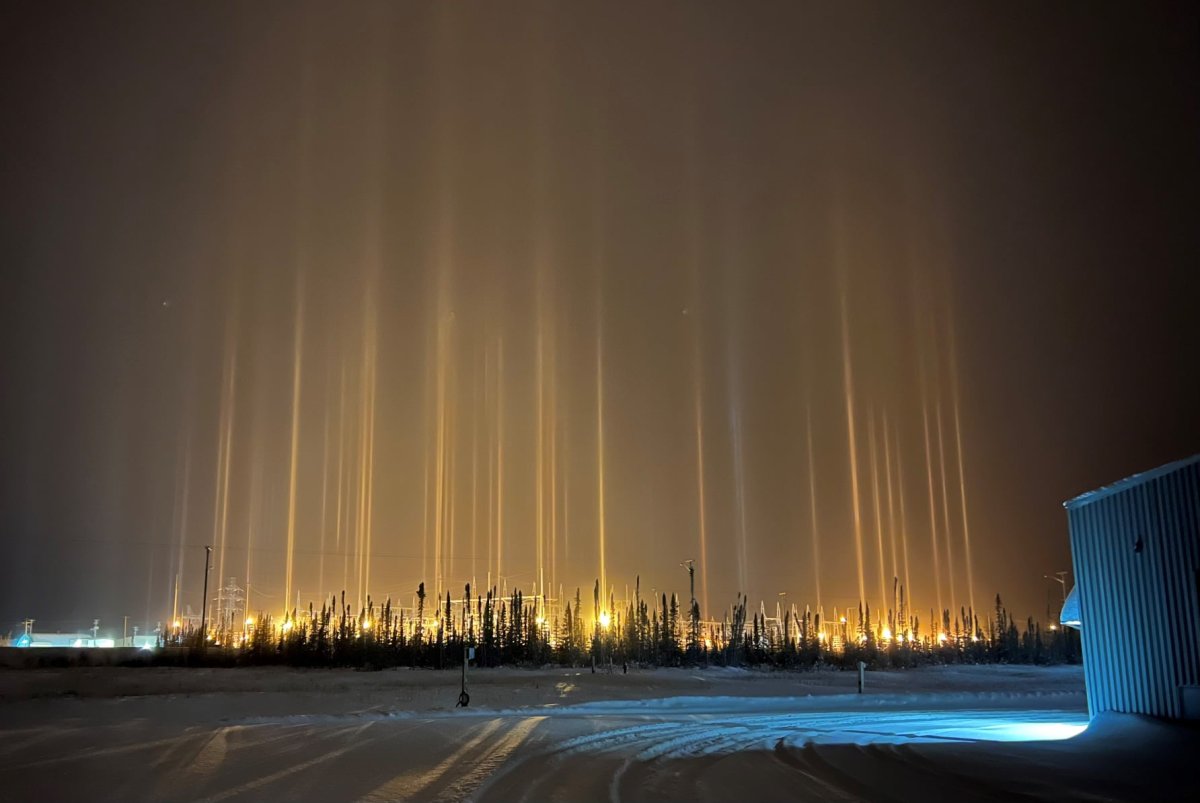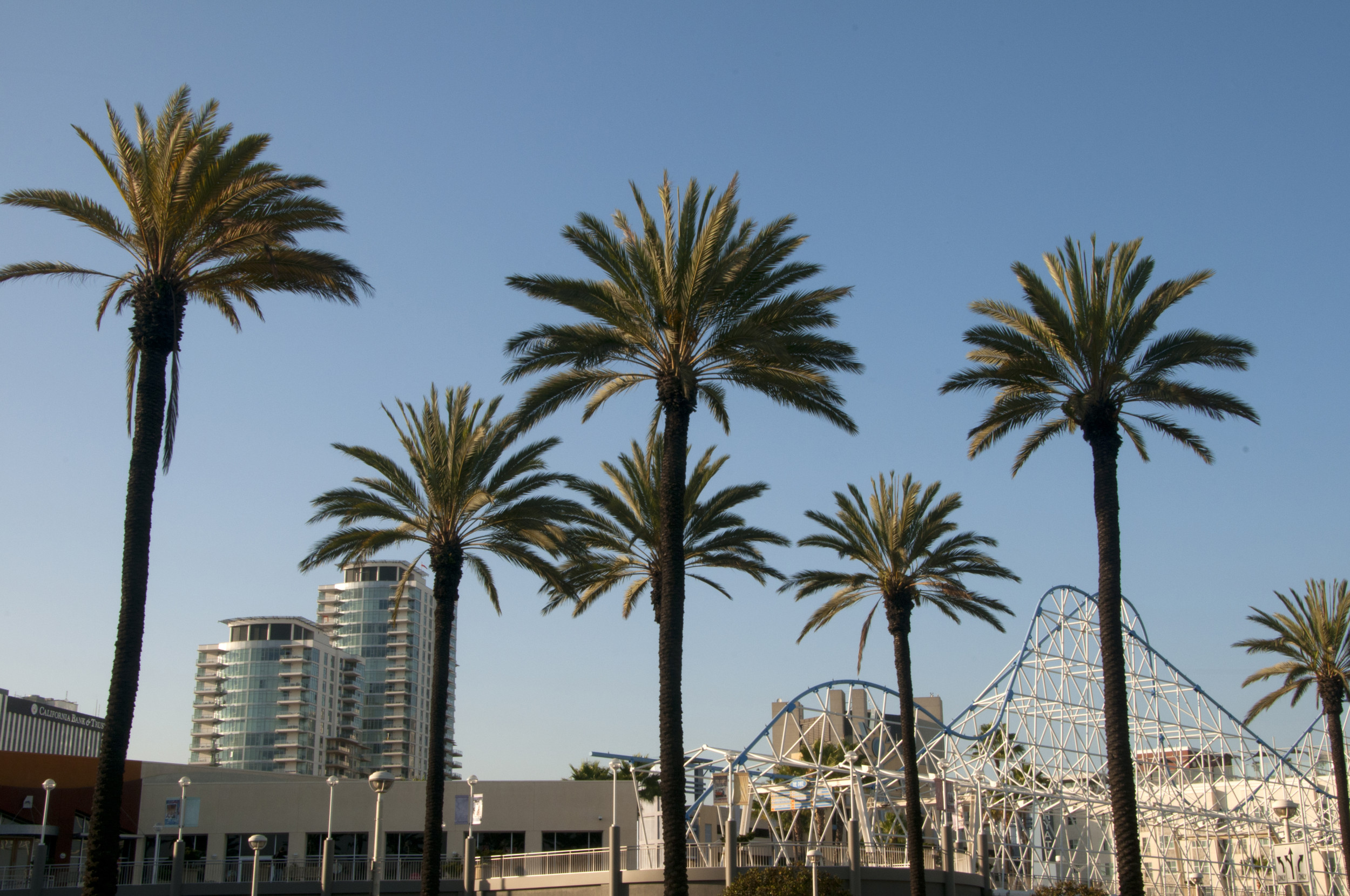An energy company employee in the Canadian province of Manitoba has captured a spectacular image of a rarely seen phenomenon characterized by pillars of light "shooting skyward."
The photo was taken by Mark Matwick, who works at the Keewatinohk Converter Station—located near the town of Gillam in the north of the province—operated by Manitoba Hydro.
"Are aliens descending on Keewatinohk Converter Station? Not quite. These mysterious beams of light are called light pillars," Manitoba Hydro said in a LinkedIn post.
"They're a rare sight, but less rare in northern Manitoba where the extreme cold conditions needed to see them are common."
The power company said the phenomenon is the result of ice crystals in the atmosphere acting as a mirror and reflecting the light source below, in conditions when the night is cold and without wind.
Justin Anderson, a full-time northern lights photographer and co-creator of the Manitoba Aurora and Astronomy Facebook page, told CTV News Winnipeg that Matwick's photo was an excellent example of the light pillar phenomenon.
"That's probably one of the best photos of light pillars I've ever seen," Anderson said.
The photographer said the light being reflected by floating ice crystals can shoot high into the sky.
"It will reflect that light upwards into the atmosphere and it'll go hundreds of feet," he said. "It looks like hundreds of feet for us, but really it's going miles in the air and it looks incredible."
The photograph can be seen here.
Because conditions have to be just right for the phenomenon to appear, light pillars are a relatively rare sight. Anderson said only a handful of half-decent examples are recorded every year in the region.
"It's one of the coolest things you can see underneath the night sky besides the northern lights," Anderson said.
The photographer said one of the best aspects of the light pillars is that anyone can see and photograph them.
"While you still can see the northern lights with your naked eye, a camera does a lot of magic behind the scenes that really amplify the picture. When it comes to light pillars, you don't need a fancy camera to take photos of them," he said.
The northern lights are a form of aurora, a phenomenon that occurs primarily in high latitudes of both hemispheres. In the Northern Hemisphere, they are called aurora borealis, while in the Southern Hemisphere they are known as aurora australis—or southern lights.
Auroras are caused by the interaction of energetic particles, originally emitted by the sun, with the atoms in the Earth's upper atmosphere.
Newsweek has contacted Manitoba Hydro.
Update 03/02/22, 9:16 a.m. ET: This article was updated to include an image of the light pillars.

Uncommon Knowledge
Newsweek is committed to challenging conventional wisdom and finding connections in the search for common ground.
Newsweek is committed to challenging conventional wisdom and finding connections in the search for common ground.
About the writer
Aristos is a Newsweek science reporter with the London, U.K., bureau. He reports on science and health topics, including; animal, ... Read more
To read how Newsweek uses AI as a newsroom tool, Click here.








